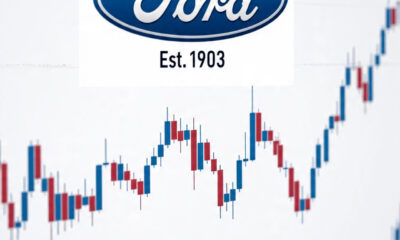Few industries were hit as hard as the cruise sector during the pandemic. For Carnival, it was a storm that halted operations worldwide and forced the company to take on massive amounts of debt to survive.
Fast forward to today, and Carnival’s turnaround story is impressive:
Debt management: Carnival has been aggressively repaying its debt, prioritizing high-interest borrowings to strengthen its balance sheet.
Fleet upgrades: The company has retired older ships and replaced them with modern, fuel-efficient vessels.
Revenue surge: In its latest quarter, Carnival reported a record $6.3 billion in revenue.
Customer deposits: Deposits reached $8.5 billion, the highest ever, showing strong consumer confidence.
Future demand: Bookings for next year are already at record levels, and fares are higher than ever.
Importantly, Carnival achieved the financial targets of its turnaround plan 18 months ahead of schedule, with adjusted return on invested capital at its highest in two decades.
Lower interest rates are another tailwind. Not only do they help Carnival manage debt repayment, but they also support consumers’ ability to spend on discretionary items like vacations.
Carnival’s valuation remains attractive too, trading around 15x forward earnings, which is modest given its growth trajectory.
Still, investors must acknowledge the elephant in the room: debt risk. While Carnival’s strategy is solid, the company’s large debt load remains a vulnerability if market conditions turn unfavorable.
On the other side of the consumer spectrum is Chewy, the go-to online retailer for pet owners. With its wide range of food, treats, toys, and healthcare services, Chewy has built a strong moat in a growing industry.
Key highlights from Chewy’s performance:
Autoship advantage: Chewy’s Autoship program — which lets customers schedule automatic reorders — now represents 83% of total sales, ensuring predictable revenue streams.
Sales growth: In the latest quarter, Chewy posted an 8% revenue increase to $3.1 billion, while Autoship sales surged 15%.
Profitability milestone: Chewy became profitable a few years ago and continues to strengthen its bottom line.
New revenue streams: The launch of Chewy veterinary clinics has expanded its reach beyond e-commerce, attracting new customers and deepening existing relationships.
Strong balance sheet: Chewy has zero debt and holds $590 million in cash, giving it financial flexibility and stability.
Despite stiff competition from traditional retailers, Chewy’s loyal customer base, combined with its subscription-driven model, provides a long-term growth runway.
Valuation-wise, Chewy trades at about 29x forward earnings, higher than Carnival’s multiple. But that premium reflects its debt-free position and consistent growth outlook.
Carnival vs. Chewy: Which Stock Wins?
Both Carnival and Chewy are solid plays in the consumer sector — but they cater to very different markets.
Carnival is a recovery story, benefiting from pent-up travel demand, improved margins, and easing financial pressure. However, its high debt remains a lingering risk.
Chewy is a growth-and-stability story. With a subscription-driven model, loyal customers, new ventures like vet clinics, and zero debt, Chewy offers long-term resilience.
From a valuation standpoint, Carnival is cheaper, but that comes with more financial risk. Chewy is pricier, but its debt-free balance sheet and stable recurring revenue make it the safer long-term bet.
Final Takeaway
If you’re building a diversified portfolio, both stocks could play a valuable role — Carnival for growth potential in the travel rebound, and Chewy for defensive growth in the booming pet care industry.
But if forced to choose just one stock right now, Chewy edges out Carnival due to its financial stability, strong customer loyalty, and diversified growth strategy.
⚠️ Disclaimer
This article is for informational purposes only and does not constitute financial advice. Always conduct your own research or consult with a professional financial advisor before making investment decisions.


 Dividend Stocks2 months ago
Dividend Stocks2 months ago
 Trending news2 months ago
Trending news2 months ago
 ASX Stocks2 months ago
ASX Stocks2 months ago
 ASX Stocks2 months ago
ASX Stocks2 months ago
 Trending news2 months ago
Trending news2 months ago
 ASX Stocks2 months ago
ASX Stocks2 months ago
 Dividend Stocks2 months ago
Dividend Stocks2 months ago
 Trending news2 months ago
Trending news2 months ago


